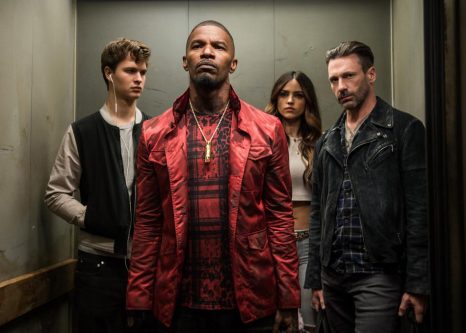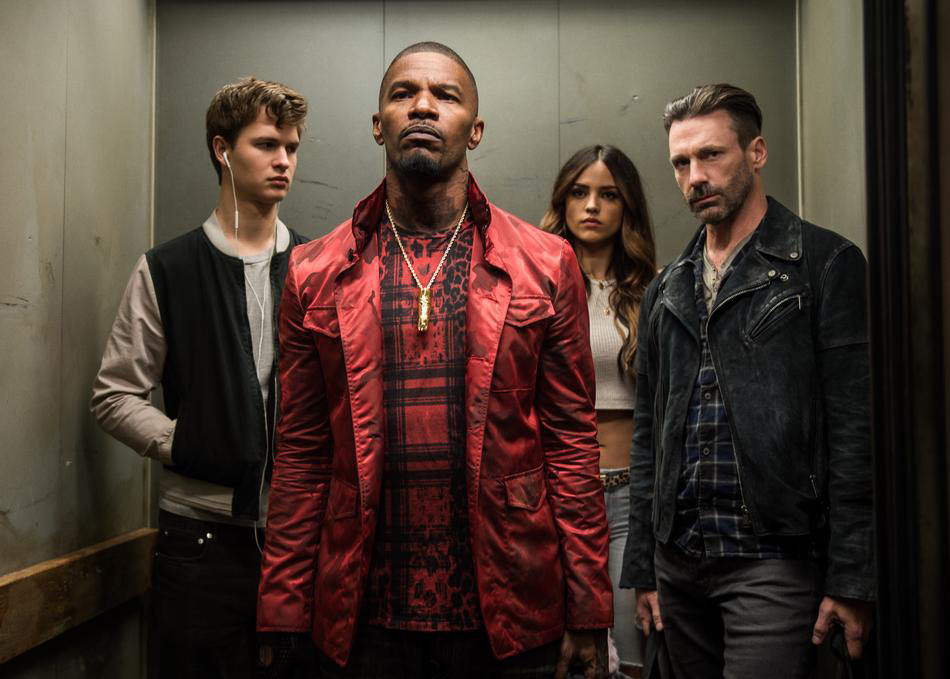I remember reading Roger Ebert’s review of Midnight Cowboy for a class on American film. The John Schlesinger film about a naïve young man’s re-education in New York makes much use of pop music, particularly the Henry Nillsson song, “Everybody’s Talking,” which is repeated throughout its two-hour running time. It’s one of my favourite deployments of music as text in the films of that decade. Ebert was not too much a fan of the use of music, though. He felt that Schlesinger was too dependent on his evocative song, leaving it to fill gaps in the narratives. “How long will it be before we recover from The Graduate [released two years earlier] and can make a movie without half a dozen soul-searching pseudo-significant ballads?”

In the almost 50 years since Midnight Cowboy, film’s relationship with popular music has developed (and sometimes regressed). I would have liked to read Ebert’s take on Edgar Wright’s new film, Baby Driver, which challenges our idea of how we interact with film, how we interact with music and how we interact when the two entities become suffused. The relationship between film and music is such that music and music videos exist in subservience to film when it comes to “legitimate” artwork. It’s why describing a film as “like a music video” is a pejorative, and it’s why “cinematic” is a reward, even though neither term has any true intrinsic meaning. Baby Driver is a straightforward film. It follows the tale of the eponymous Baby, who is a hired getaway driver. But Baby, played by Ansel Elgort, is so reserved in his personality, almost stoic, it’s difficult to see him as complicit in the crimes, at least at first. A childhood tragedy with his parents saw him losing them to a car crash while he was in the car. The accident left him with tinnitus, a constant ringing in his ears. And to drown that ringing out, Baby plays music. All the time.
In a late scene in the film, Baby is making a getaway after a sequence of terrible events. A robbery has gone awry. He’s lost his iPod, his lifeline, and jumps into a stolen car and turns on the radio. It’s a tense moment. He’s anxious and risible. He’s not finding the right song. He keeps changing the station until – aha – he finds it. The right song. Now he can breathe. And so he drives off, the music as a panacea for the chaos around. The moment is the paradigm the entire film is built on. It’s very funny. It’s almost somewhat ridiculous. But underneath that, it congeals and becomes quite sad. Baby Driver captures that feeling of having music always playing in your head. Always. But, it also captures the way a dependence on a remedy can become its own affliction. Wright is not using music to do the work for his narrative. Its dynamic soundtrack spans decades and genres and does not always go for the easiest options from some artistes. Wright is deploying the songs in this film as tools in his arsenal. As a case study, Baby Driver argues that pop music becomes another element of film, like cinematography, like editing, like costume design. If Baby Driver is his main argument, then it’s a compelling one.
His film is a fable. It does not have characters as much as it has types. The callow young male lead, the waitress as love interest, the crime boss with hidden depths, the charismatic but farcical villain and so on. The cast is uniformly good, even if it’s somewhat jarring at first that Elgort’s seems to be the least impressive performance. Jamie Foxx succeeds most in playing his “type.” He teeters on the brink of being too much but gives an excellently calibrated performance, doing some of his finest work since Collateral. I keep coming back to Elgort’s work, which has been criticised for its lack of charm, and as the film’s biggest crutch. I disagree. Baby’s mundaneness might be just a perfect example of Wright utilising Elgort’s own inertness, but instead, for me, it seems to be a manifestation of a subtle but recurring ambivalence throughout the film’s contemplation on life, and especially a life of crime.
Wright never seems to be endorsing Baby; he seems to be pitying him. Baby is a man—a boy really—who is trapped because he can’t turn the music off. Because he wants to get rid of that hum. But you can’t turn off the darkness and you can’t turn off the pain. It’s coming for you anyway.
When I left Baby Driver, I could sense the slight uneasiness of those walking out with me. They had been an involved audience throughout much of the film, responsive to its humour and slyness. But the sharp swerve the film takes in the last act, specifically in the last ten minutes, seemed to if not confound them at least make them think. This is not unusual for Edgar Wright, who best subverted expectations with his last film, The World’s End. Any knowledge of Wright challenges the readings of the film’s coda as simplistic, or as glorifying a hero that’s not heroic. Instead, Baby Driver signals a great ambivalence.
Sure, it’s easily warmer than you’d expect but the film’s conclusion, when it comes, suggests the reality that one cannot ever really ride off into the sunset. That ride off will forever be tinged by the carnage which came before.
This ambivalent core reverberates even when the film is funny. And it is very funny, often when you least expect it. The delivery of a Barbra Streisand and then a Dolly Parton joke are two of the funniest sequences I’ve seen all year at the movies, providing humour while at the same time developing tension. The revelation of two main characters’ real name is both amusing but had me thinking for some time after. In the car on the way home after the movie, I turned to my friend who I’d seen it with and went, “Oh, now I get it.” That’s the kind of movie this is. The glossy surface isn’t an obfuscation of flatness but indicative of a great depth. Just like the best of songs. You keep playing them over and over because each listen reveals something new. I’ve seen Baby Driver twice this week and I already want to go back for a third time.
Have a comment? Write to Andrew at almasydk@gmail.com

